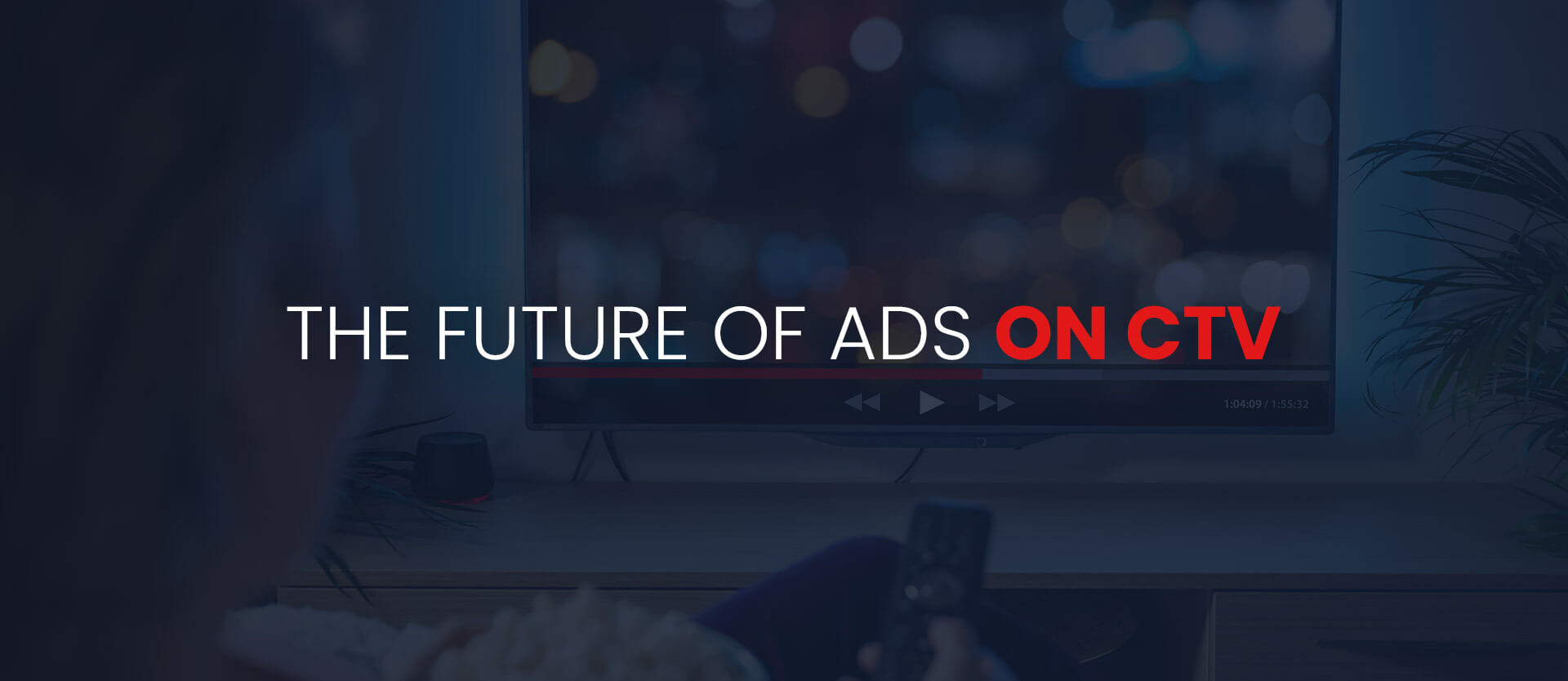The Future of Programmatic Advertising
Marketers predict that 88% of all digital display marketing in the US will be done via programmatic advertising by the end of 2021.
To put it simply, programmatic advertising is the use of machine learning and Artificial Intelligence to buy and optimize digital campaigns in real-time. It removes a lot of the stress and hassle that comes with purchasing directly from publishers. Human negotiations and pre-set prices are replaced by real-time auctions where ads are purchased the moment a visitor enters the website.
The goal of programmatic advertising is to boost ad efficiency and establish transparency for both the publisher and the marketer. For many entrepreneurs and organizations, programmatic advertising has become an opportunity to capture the right audience at the right time and gain a competitive edge in the market.
In this guide, we explore the trends set to transform the world of programmatic advertising and how brands can make use of them.
Wearable Technology as Ideal Marketing Tools
Nearly one-in-five U.S. adults report that they wear a smart watch or wearable fitness tracker on a regular basis. Wearable technology is becoming so popular that savvy marketers are starting to run programmatic ads on them.

Here’s why wearables are ideal marketing tools:
- A smartwatch’s digital interface enables the delivery of content and digital ads in different formats.
- Wearables have the ability to collect real-time data on moods, location, health metrics, and lifestyle. This makes it an ideal channel to deliver highly personalized promotions and amplify engagement.
- Wearables can provide instant notifications for apps, emails, and text messages which allows users to see and respond to notifications much faster. This in turn provides marketers quicker access to relevant data such as click through rates, enabling them to be more adaptable and responsive during campaigns.
- Health and fitness wearables also enable brands to improve timing of customer engagement. A properly targeted marketing message delivered when the user just finished a workout and when endorphins are high can leave a positive impression and drive interactions.
The advertising potential of wearable tech has sparked the interest of various companies. including American Express and Walgreens have started delivering targeted ads on wearables in an effort to enhance their brand message and provide better customer experiences.
Streaming And OTT
Over the last decade, at-home entertainment via streaming services have become the primary way to consume content.
Apart from leading over-the-top (OTT) services like Netflix, Hulu, and Amazon Prime, media giants like Disney, Apple, and HBO have since introduced their own direct-to-consumer video streaming services. Meanwhile, digital audio channels like Spotify, Pandora, Deezer, and SoundCloud are dominating the music streaming market.

With stay-at-home orders still in place, OTT content consumption is at a record high. This means OTT and digital audio advertising will also likely continue to surge. In fact, latest data shows that OTT local ad spending is projected to grow from nearly $1.18 billion to $2.37 billion by 2025. And with 88% of marketers saying that video marketing is key to positive ad ROI, more brands will invest in OTT advertising to drive revenue and engagement.
Growth of Voice-Activated Advertising
46%, nearly half of American adults, report that they use voice-controlled digital assistants to interact with smartphones and other devices. Researchers estimate that eight billion voice-activated assistants will be utilized by 2023, a significant growth over the 2.5 billion that were used in 2018.
These assistants, such as Apple’s Siri and Amazon’s Alexa, are much more than convenient tools. They are designed to perform various tasks while interacting with users in a human-sounding voice and natural speech patterns that you wouldn’t normally expect from regular computers.

As voice-activated technologies become more prevalent worldwide, brands will aim to produce interactive voice ads. For example, music-streaming giant, Spotify, has introduced voice-powered ad content that plays between songs and prompt listeners to say “Play Now” to check out the content. Should the user say besides the required command, a tone will sound and the microphone will automatically off. The ad break then continues as usual. Brands must maximize those few seconds to capture the listener’s interest and encourage them to hear more of the ad.
Likewise, Pandora, has started testing voice-enabled ad formats for iconic brands like Nestlé and Unilever. The ads urge listeners to answer a simple “yes or no” question before delivering information about the brand or product. This direct-response marketing allows advertisers to collect data faster which can be used to improve targeting and engagement.
What’s more, voice commands provide listeners with instant responses and access to products or services, allowing faster conversion and revenue generation. No more clicking through links or reading wordy ads. Listeners only have to say commands like “buy it,” “download the app,” or “learn more” to explore content or make a purchase.
With screen fatigue becoming a growing concern for customers, automated voice ads will also allow marketers to interact with people who are trying to decrease the amount of time they spend using their smartphones.
A Post-Cookie Ecosystem
Programmatic advertisers use third-party cookies to gather data about a user’s online behavior, site preferences, location, and more. This data is then analyzed and used to build up patterns that help advertisers display more targeted and relevant content. Data in cookies doesn’t get altered, meaning cookies themselves aren’t dangerous. However, malicious users can steal cookies and gain access to people’s browsing histories.
To increase web privacy, web browsers including Safari and Firefox have blocked third-party cookies by default. Likewise, Google announced in January 2020 that it will block third-party cookies by default through a phased approach that will last until 2022.

Programmatic advertisers fear that a cookie-free ecosystem could negatively impact campaign performance. Without cookies, it would be significantly harder to target audience, track campaigns, and measure results.
That being said, data-driven marketing won’t be ending anytime soon. Ad tech can still operate even without third-party cookies and it will even promote greater user control and privacy. Many brands are already forging ahead to create a safer and more effective advertising ecosystem, one that requires authentication in exchange for paid ads and useful content.
In a cookie-free world, programmatic advertising will require solutions that prioritize identity, safety, and consumer trust. Strong authentication and security controls for every user is necessary in reducing the risk of data loss and cyberattacks.
The Rise of FLoC
Set to launch in 2023, Google’s Federated Learning of Cohorts (FLoC) technology is marketed as an ideal replacement to third-party cookies. FLoC is based on the Privacy Sandbox, a Google-led initiative that involves creating web standards for websites to request certain pieces of user information without compromising data security.
FLoC is a privacy-first approach to delivering ads and measuring ad success. It involves clustering large numbers of users with similar interests and conceals individual by anonymizing end users. It also utilizes on-device processing to keep a user’s web history private on the browser and prevent it from being shared to unauthorized parties.
FLoC still enables brands to access a user’s browsing habits and provide personalized content. But instead of making data traceable to the individual, information is added to a cohort of the browsing preferences of several people. This ensures data stays protected as the user moves across multiple websites.
According to Google’s initial testing of FLoC, marketers may see around 95% of the conversions per dollar spent compared to third-party cookie-based marketing. However, results will still depend on the specific audience group being targeted and the effectiveness of FLoC’s clustering algorithm.
The Future is Bright With Programmatic Advertising
Programmatic advertising has the potential to help brands thrive, but it can also be tricky to navigate on your own.
Aniview offers a holistic ad monetization solution that helps brands leverage OTT advertising effectively. Our premier video ad player and video ad server technology allows you to deliver and track ads seamlessly across various devices. Contact Aniview now and connect with leading publishers and advertisers.



